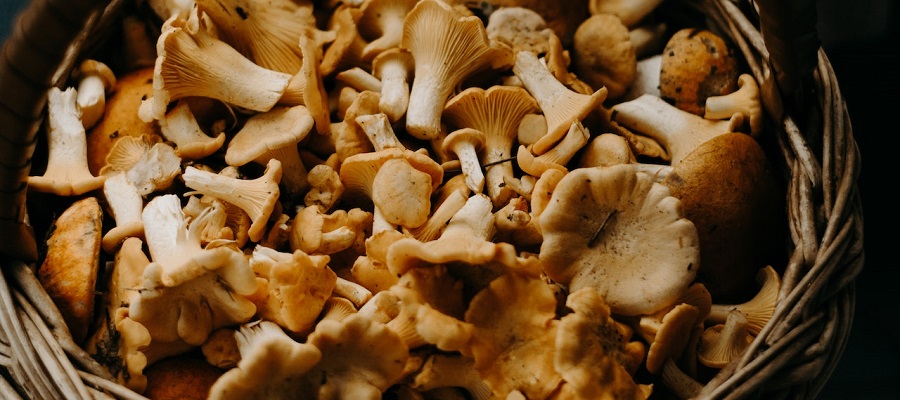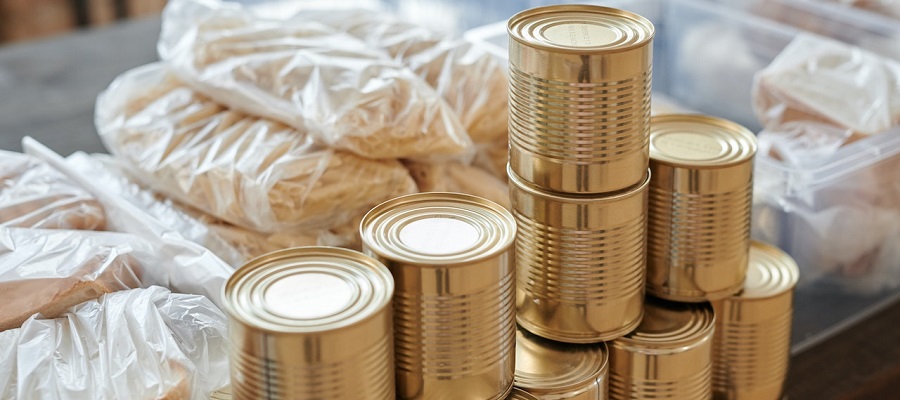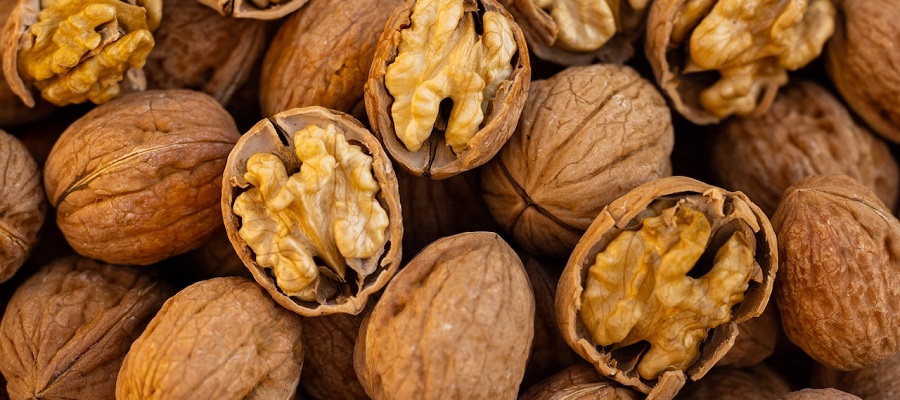Mushrooms are fungi that are found in many different shapes, sizes, and colors. They can be found in a variety of habitats, including forests, grasslands, and even in urban areas. Some species of mushrooms are edible and are a source of food for humans and animals, while others are poisonous and should not be consumed.
Mushrooms have a unique structure, with a fleshy body called a fruiting body that produces spores. The spores are released and spread, allowing the mushroom to reproduce.
Mushrooms have a long history of use in traditional medicine, and some species are believed to have medicinal properties. Research is ongoing to identify and understand the potential health benefits of various mushrooms.
It is important to be careful when identifying and collecting mushrooms, as some species are toxic and can cause serious illness or even death if ingested. It is best to purchase mushrooms from a reputable source and to consult with a knowledgeable expert before consuming any wild mushrooms.
What are the different parts of a mushroom?
The main parts of a mushroom are the fruiting body, the gills or pores, the stem, and the mycelium.
-
Fruiting body: This is the visible part of the mushroom that we typically think of as the "mushroom." It is the fleshy, spore-bearing structure that grows above ground. The fruiting body can be various shapes and sizes, and it is often umbrella-shaped.
-
Gills or pores: These are the thin, flat structures found on the underside of the mushroom's cap. They are responsible for producing and releasing the spores. In some species of mushrooms, the gills are thin and closely packed together, while in others they are thicker and more widely spaced.
-
Stem: The stem supports the mushroom's cap and holds it above the ground. It can be long or short, and it may or may not have a ring around it.
-
Mycelium: This is the vegetative part of the mushroom, made up of a mass of branching, thread-like hyphae. The mycelium is usually hidden underground or within a substrate, and it is responsible for absorbing nutrients and water from the environment. The mycelium eventually produces the fruiting body, which emerges above ground to produce and release spores.
What does eating mushrooms do to your body?
Mushrooms are a good source of nutrients and have a number of potential health benefits. Here are some ways that eating mushrooms can benefit your body:
-
Nutrient-rich: Mushrooms are a good source of nutrients, including vitamins, minerals, and antioxidants. They are low in calories, fat-free, and cholesterol-free, making them a healthy choice for people looking to maintain a healthy weight.
-
Boost immune system: Mushrooms contain polysaccharides, which are thought to boost the immune system and help protect against illness.
-
Improve gut health: Mushrooms contain prebiotics, which are non-digestible fibers that feed the beneficial bacteria in the gut and promote a healthy balance of microflora.
-
May lower blood pressure: Some studies have found that consuming mushrooms may help lower blood pressure and reduce the risk of hypertension.
-
May help control blood sugar: Mushrooms have a low glycemic index, meaning they do not cause a rapid spike in blood sugar levels. This may make them beneficial for people with diabetes or at risk of developing diabetes.
-
May reduce the risk of heart disease: Mushrooms are low in saturated fat and cholesterol, which may help reduce the risk of heart disease.
It is important to note that more research is needed to fully understand the potential health benefits of mushrooms and to determine the optimal dosage and frequency of consumption. As with any food, it is important to consume mushrooms in moderation as part of a balanced diet.
What are some types of poisonous mushrooms that should be avoided?
There are many types of poisonous mushrooms, and it is important to be cautious when identifying and consuming wild mushrooms. Some common poisonous mushrooms include:
-
Amanita phalloides: Also known as the death cap, this mushroom is one of the most poisonous mushrooms in the world. It is found throughout Europe and North America and has caused numerous deaths.
-
Amanita virosa: Also known as the destroying angel, this mushroom is highly toxic and can cause severe illness or death. It is found in Europe, North America, and Asia.
-
Galerina marginata: This mushroom is found throughout the world and contains toxins that can cause severe illness or death.
-
Lepiota brunneoincarnata: This mushroom is found in North America and Europe and contains toxins that can cause severe illness or death.
-
Conocybe filaris: This mushroom is found in North America and Europe and contains toxins that can cause severe illness or death.
It is important to be careful when identifying and collecting mushrooms, as some species are toxic and can cause serious illness or even death if ingested. It is best to purchase mushrooms from a reputable source and to consult with a knowledgeable expert before consuming any wild mushrooms.
What are some common edible mushrooms?
There are many types of edible mushrooms, and some of the most common ones include:
-
Agaricus bisporus: This is the most widely cultivated mushroom in the world and includes common white, brown, and stuffed mushrooms.
-
Pleurotus ostreatus: Also known as oyster mushrooms, these have a delicate, mild flavor and a soft, meaty texture.
-
Lentinula edodes: These are shiitake mushrooms, which have a distinctive, earthy flavor and a meaty texture.
-
Agaricus campestris: Also known as meadow mushrooms or field mushrooms, these have a distinctive, slightly nutty flavor and a firm texture.
-
Boletus edulis: These are porcini mushrooms, which have a rich, meaty flavor and a firm, slightly spongy texture.
-
Grifola frondosa: These are maitake mushrooms, which have a woodsy, earthy flavor and a tender, almost crunchy texture.
-
Cantharellus cibarius: These are chanterelle mushrooms, which have a slightly fruity, apricot-like flavor and a firm, slightly spongy texture.
It is important to be sure to properly identify any wild mushrooms before consuming them, as some species are poisonous and can cause serious illness or even death if ingested. It is best to purchase mushrooms from a reputable source and to consult with a knowledgeable expert before consuming any wild mushrooms.
What are some common uses of mushrooms in cooking?
Mushrooms are a versatile ingredient that can be used in a wide variety of dishes. Here are some common ways to use mushrooms in cooking:
-
Sautéed or pan-fried: Thinly sliced mushrooms can be sautéed or pan-fried in butter or oil until they are golden brown and tender. They can be served as a side dish or used as a topping for burgers, sandwiches, or pizzas.
-
Soups and stews: Mushrooms can add depth of flavor and a meaty texture to soups and stews. They can be added at the beginning of the cooking process, or they can be added later on for a more delicate flavor.
-
Grilled: Whole mushrooms can be brushed with oil, seasoned with salt and pepper, and grilled until tender and caramelized. They can be served as a side dish or used as a topping for sandwiches or salads.
-
Roasted: Roasted mushrooms make a great side dish or topping for roasted meats. They can be tossed with oil, seasoned with herbs and spices, and roasted in the oven until tender and caramelized.
-
Pasta and rice dishes: Mushrooms can be added to pasta and rice dishes to add flavor and texture. They can be sliced or diced and sautéed before being added to the dish.
-
Pizza: Sliced mushrooms are a popular topping for pizzas, along with other vegetables and meats.
-
Omelets and frittatas: Chopped mushrooms can be added to omelets and frittatas for added flavor and texture.
-
Sauces and dips: Mushrooms can be puréed or finely chopped and added to sauces and dips for a unique flavor.
-
Dried: Dried mushrooms have a concentrated, intense flavor and can be reconstituted in water or broth and used in a variety of dishes.
What are some common mistakes when cooking with mushrooms?
Here are some common mistakes to avoid when cooking with mushrooms:
-
Overcrowding the pan: When sautéing or frying mushrooms, it is important to give them plenty of space in the pan. If the pan is too crowded, the mushrooms will steam instead of brown, and they will become soggy rather than crispy.
-
Not seasoning properly: Mushrooms have a subtle flavor, and it is important to season them well to bring out their full potential. Be sure to season the mushrooms with salt and pepper before cooking, and consider adding other herbs and spices to enhance the flavor.
-
Not washing properly: It is important to rinse mushrooms gently under cold running water to remove any dirt or debris. Do not soak them, as they will absorb water and become soggy. Gently pat the mushrooms dry with a paper towel before cooking.
-
Overcooking: Overcooked mushrooms can become rubbery and lose their texture and flavor. Be sure to monitor the mushrooms closely while cooking and remove them from the heat as soon as they are tender.
-
Not using a high-quality oil: When sautéing or frying mushrooms, it is important to use a high-quality oil with a high smoke point, such as avocado oil or grapeseed oil. These oils will help the mushrooms brown evenly without burning.
What foods should you avoid putting mushrooms in?
Mushrooms can be a great addition to many different types of dishes, but there are a few things to consider when pairing them with other ingredients. Here are a few things to keep in mind:
-
Strong-flavored ingredients: Mushrooms have a delicate, earthy flavor, and they can be overwhelmed by strong-flavored ingredients. Be mindful of the other ingredients in a dish and choose complementary flavors that will not overpower the mushrooms.
-
Acidic ingredients: Acidic ingredients, such as tomatoes, citrus juices, and vinegar, can cause mushrooms to become tough and rubbery. If using acidic ingredients in a dish with mushrooms, it is best to add them towards the end of the cooking process to minimize their impact on the texture of the mushrooms.
-
Raw ingredients: Some raw ingredients, such as raw onions and garlic, can cause mushrooms to become slimy and unappealing. If using raw ingredients in a dish with mushrooms, it is best to add them towards the end of the cooking process or to cook them briefly to soften their impact on the texture of the mushrooms.
Overall, it is important to consider the flavors and textures of all the ingredients in a dish and to choose combinations that will work well together. With a little experimentation and creativity, you can find many delicious ways to incorporate mushrooms into your cooking.


